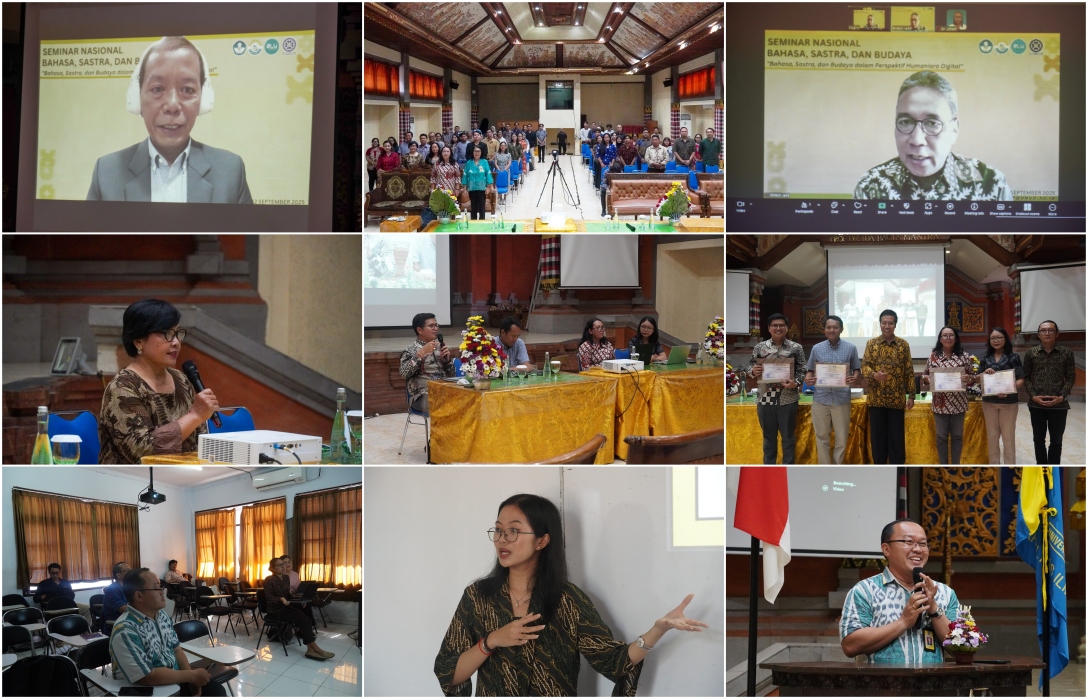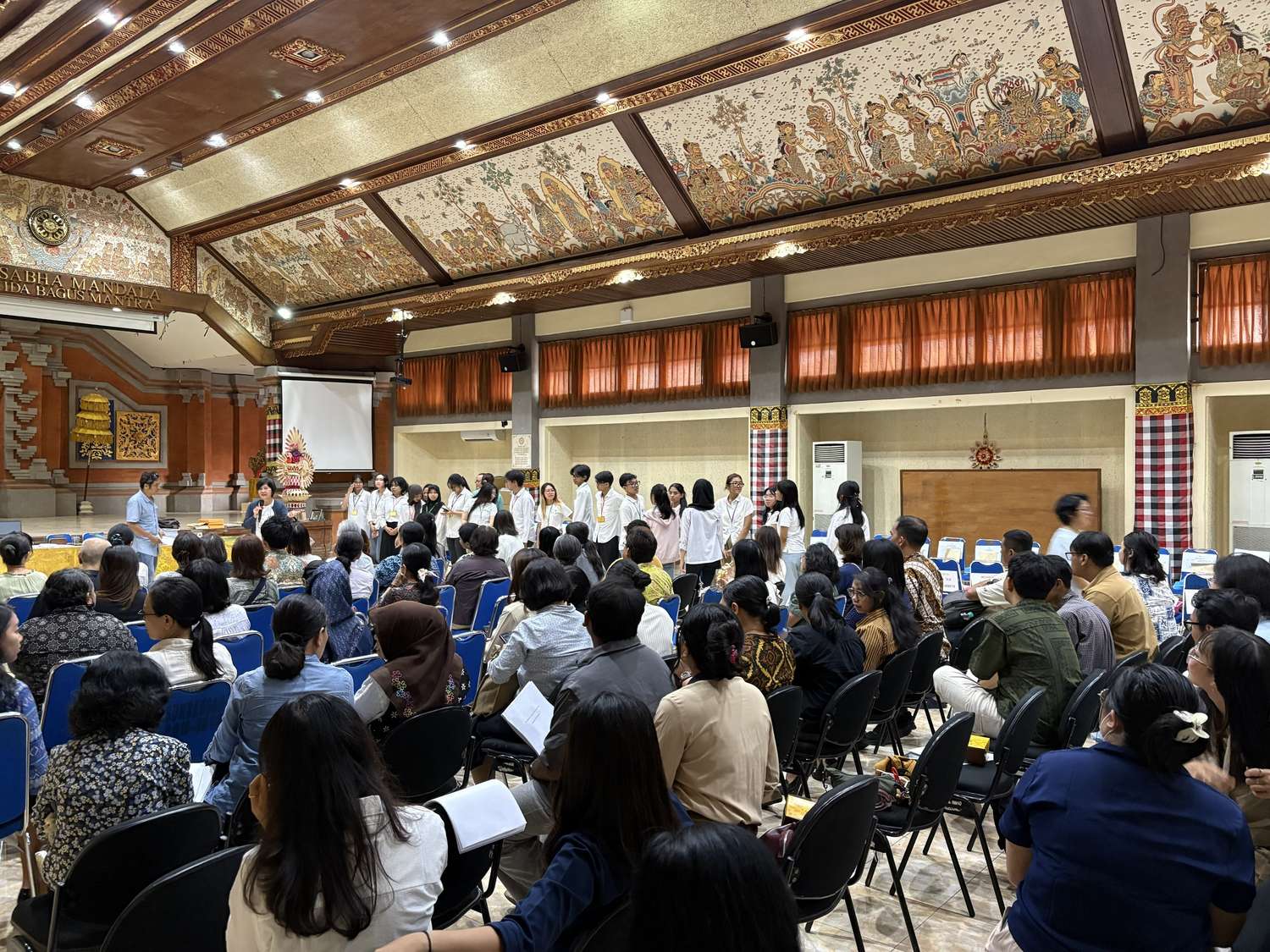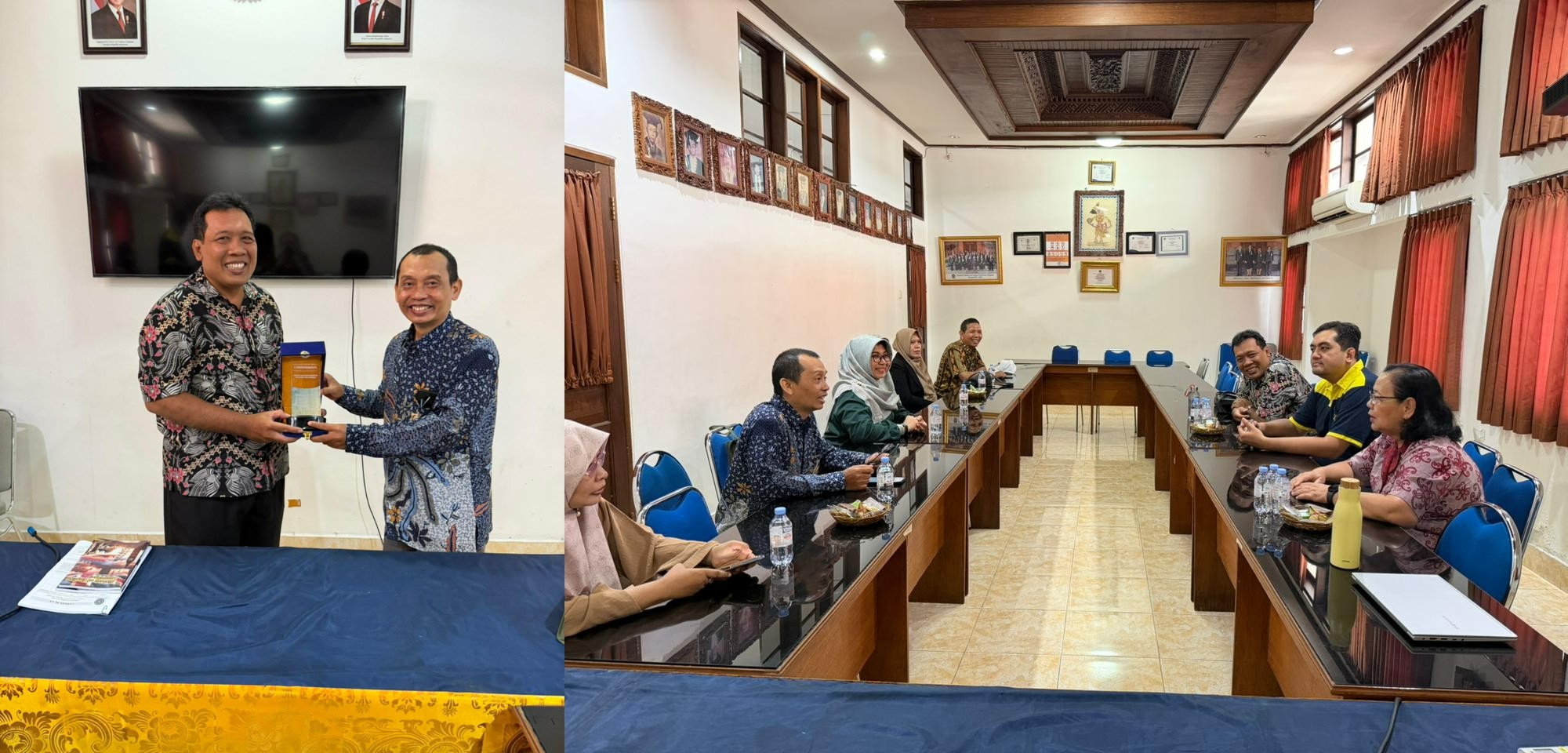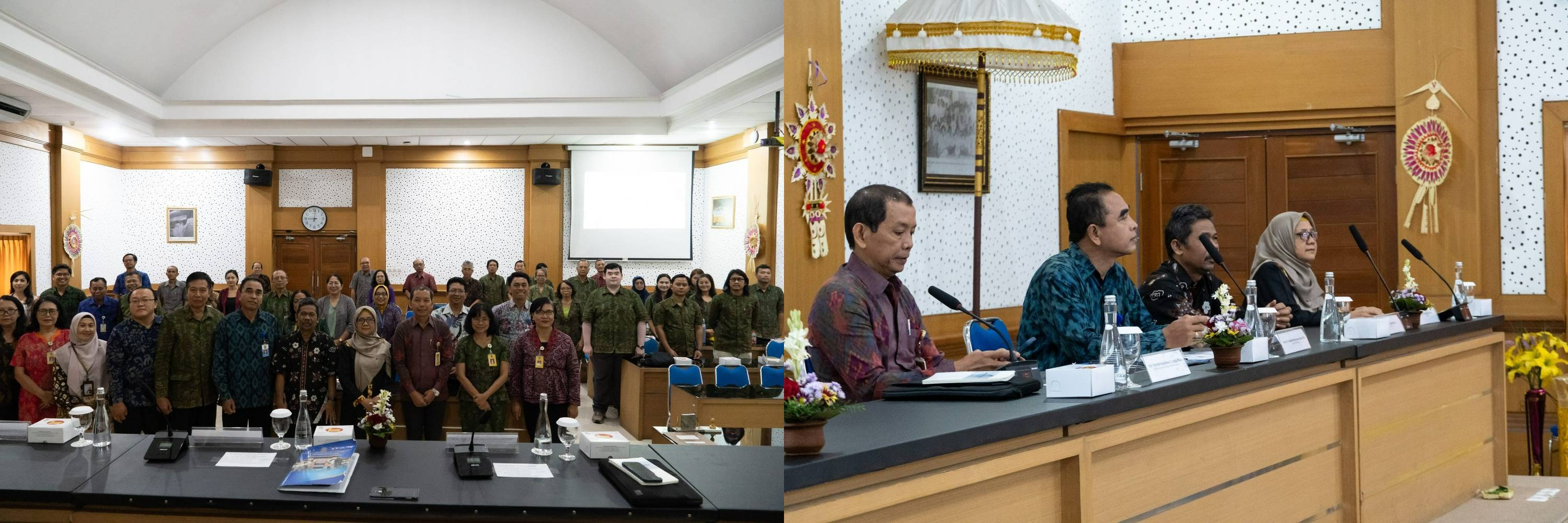FIB Unud Holds National Seminar on Language, Literature, and Culture (SNBSB) 2025 as a Series of BKFIB 2025 Activities
On Friday, September 12, 2025, the Faculty of Humanities, Udayana University, held a National Seminar on Language, Literature, and Culture (SNBSB 2025), "Language, Literature, and Culture from a Digital Humanities Perspective." I Ketut Eriadi Ariana, S.S., M.Hum., the committee chair of SNBSB 2025, delivered a welcoming speech, thanking all the teams who had supported the event. He also hoped that the seminar would serve as a platform for building and contributing to progress, as well as realizing the ideals of the FIB founders. Then, the Dean of FIB Unud, Prof. I Nyoman Aryawibawa, S.S., M.A., Ph.D., officially opened the seminar. In his remarks, he stated that SNBSB 2025 was part of a series of activities commemorating the 67th anniversary of FIB and the 44th anniversary of FIB's Family Council (BK). This year's theme was highly relevant as it aligns with the development of digital humanities that has been underway at FIB Unud since the beginning of this year.
This seminar was held with one keynote speaker and three main speakers. The keynote speaker session featured Hilmar Farid, Ph.D., an academic and national historian. This session was guided by Dr. Ni Ketut Widhiarcani Matradewi, S.S., M.Hum., as moderator. The speaker presented a topic entitled "Digital Humanities." Digital humanities now exist as a new approach to reading culture, language, and history by utilizing transformational technology, ethical reflection, cultural preservation, and open collaboration. From the use of computers in the 1960s to the era of artificial intelligence, GIS, and VR, this development has not only focused on the digitization of classical archives such as Balinese manuscripts, but also on disaster mapping, the preservation of sacred dances, and the creation of virtual museums. Digital humanities emphasizes that data is not neutral, so local communities must own and understand digital heritage.
He further provided examples of several projects related to digital humanities, including the DREAMSEA project, Semeton Banjar Digital, and Crowdsourcing Global, which connects Nusantara's cultural heritage to global knowledge networks. Furthermore, projects like the 2025 Bali Flood Simulation demonstrate that digital records can be used to drive social action and policy change, as well as combat the climate crisis. The keynote speaker attended virtually via Zoom Meeting. Nevertheless, the session was interactive, with participants actively engaging in a hybrid discussion and Q&A session. The next session featured three main speakers: Gede Primahadi Wijaya Rajeg, Ph.D. (Linguistics Expert), Dr. Putu Ari Suprapta, S.S., M.Hum. (Literature Expert), and Dr. Ni Ketut Puji Astiti Laksmi, S.S., M.Si. (Epigraphy Expert).
The main speaker session was guided by Sri Lestari, S.S., M.Si., as moderator. The first speaker in main speaker session was Gede Primahadi Wijaya Rajeg, Ph.D., who presented the topic “Non-Traditional Research Outputs in Linguistics in the Digital Era.” He began the presentation by providing an overview of traditional vs. non-traditional 21st-century research outputs and (digital) research ecosystems, as well as the development of non-traditional outputs in linguistics and their relationship to traditional outputs. Non-traditional research outputs in linguistics show an increase in a number of sub-fields, following the development of digital technology, in line with the development of Open Science, the problem of re-creation, and supported by manifestations related to citation data in linguistics. He also explained the stages of building Verbind (a corpus-based Indonesian verb lexical database) by producing a frequency list of all words by year + text variety for all corpus files and the breakdown of morphological structures, especially verbs.
The second keynote speaker was Dr. Putu Ari Suprapta Pratama, S.S., M.Hum. This session discussed how the Kakawin Ramayana evolved from an ancient Javanese literary text to a visual, illustrated form, or prasi, which is now also accessible digitally. With strong traces of its Indian prototype, the Kakawin Ramayana is considered the longest and most influential of the kakawin narratives. However, it underwent adaptations to Javanese culture, evident in its flora and fauna, as well as a process of Javanization in art and literature. This transformation is evident in the reliefs of Prambanan Temple and the prasi works that visualize the story of Rama, while still including quotations from the kakawin text in every scene, from sargah 15 to 18. The Prasi Ramayana even features details of nature, trees, and even textiles to enrich the narrative. It is also compared with other prasi, such as the Arjunawiwaha, to examine differences in style and content. Through this medium, the Kakawin Ramayana survives not only as a text but also lives on as a work of art that facilitates readers' visualization of the story's meaning, while also serving as an alternative reading material that connects ancient literary traditions with today's digital transformation.
In the third session, Dr. Ni Ketut Puji Astiti Laksmi, S.S., M.Si. discussed epigraphy in the digital era as the vanguard of Indonesian civilization. She emphasized that epigraphy, which focuses on the study of inscriptions, is the backbone of historical writing because it contains ancestral messages rich in life values. According to her, the task of epigraphists today is not only to study unpublished inscriptions, but also to review inscriptions that have been transcribed to make them more accessible across disciplines. The challenges faced by the younger generation in learning ancient scripts, from vocabulary and spelling to boring learning media, are being addressed with the development of methods that are now multidisciplinary and utilize digital technology, such as 3D modeling of inscriptions and user flow design in interactive learning platforms.
She further explained examples of activities, for example, the rereading of the Blanjong Inscription yielded a new interpretation of King Sri Kesari Warmadewa, and the investigation of statues at the Pucak Penulisan Temple revealed the magical-political significance of the Ancient Balinese period. Therefore, epigraphy in the modern era not only serves to preserve historical heritage but also serves as a tool for designing the future of Indonesian civilization. After the keynote and main speaker sessions were completed, the activity continued with parallel sessions for all presenters. The parallel sessions were divided into two-time sessions and held in each room in the Goris Building. This year's SNBSB was closed by the Deputy Dean I of FIB Unud, Dr. I Gede Oeinada, S.S., M.Hum. He stated that SNBSB is not only a space for sharing knowledge, but also a reference space. He hopes that the results of this seminar will later strengthen the development of digital humanities currently being carried out at FIB Unud.




UDAYANA UNIVERSITY